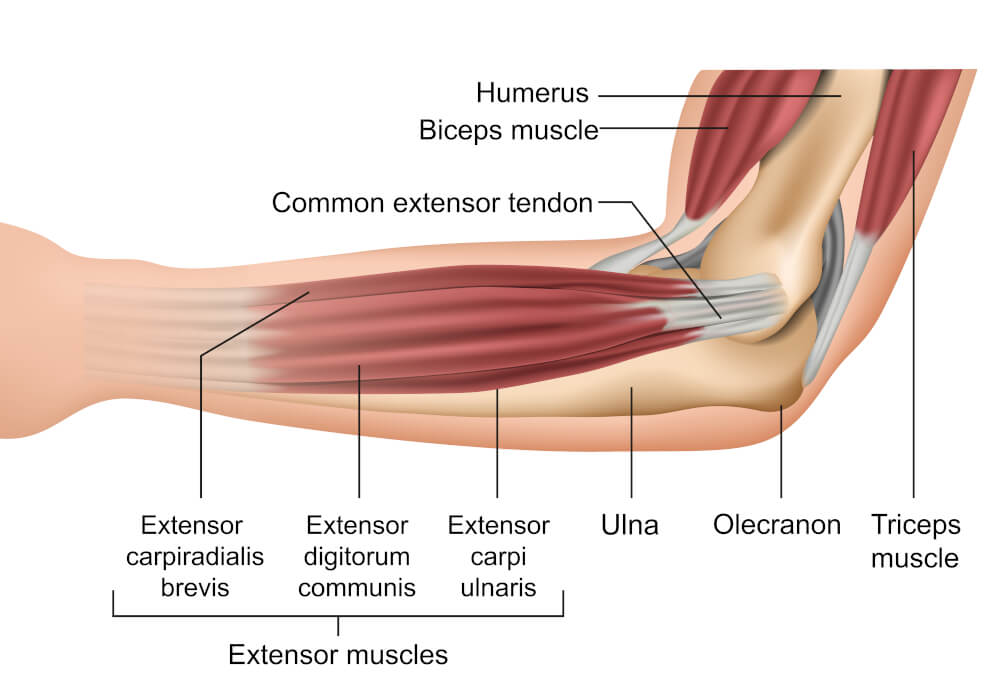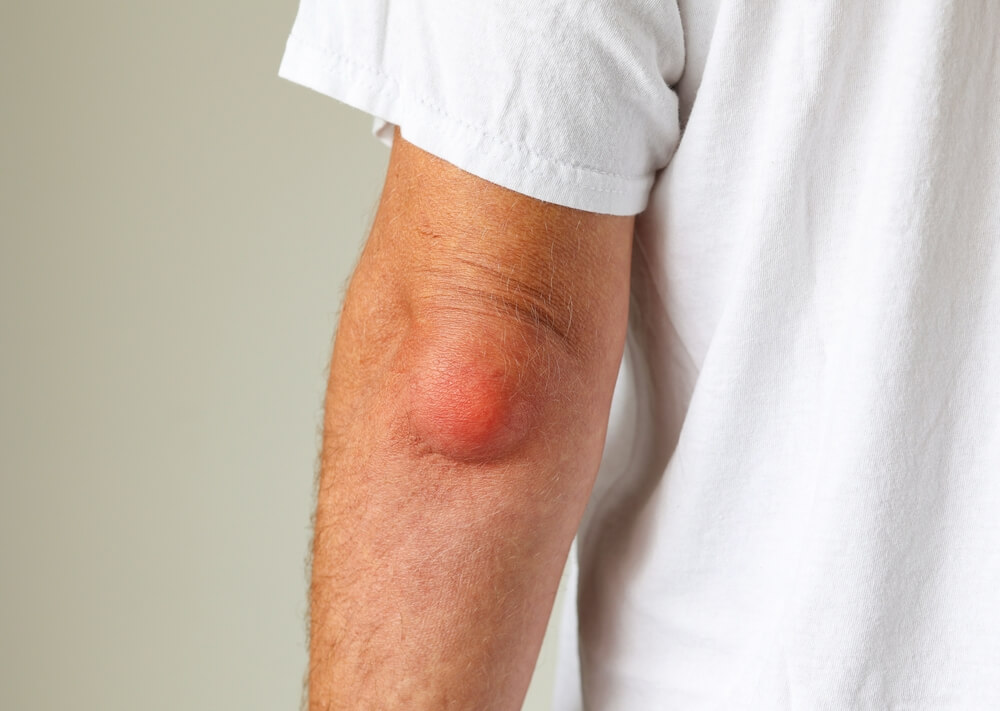Elbow Bursitis
Home » Treatment » Arm & Elbow » Elbow Bursitis
What is Elbow Bursitis?
Elbow bursitis, also known as olecranon bursitis, is a condition characterized by inflammation of the bursa sac located at the tip of the elbow, just below the pointy bone called the olecranon. A bursa is a small, fluid-filled sac that acts as a cushion and reduces friction between bones, tendons, and muscles in the body. The olecranon bursa serves to reduce friction between the skin and the prominent bone of the elbow.
If you have a question about whether your condition should be treated by one of our hand therapists, call Restored Hope Hand Therapy at (928) 275-2201.
Anatomy of the Elbow
The elbow joint is where the upper arm bone (humerus) meets the two forearm bones (radius and ulna). The bony point of the elbow is called the olecranon and is located at the upper end of the ulna. This joint consists of several muscles, ligaments, nerves, and tendons, and is both a pivot and hinge joint, meaning it allows you to bend and straighten, as well as twist and rotate your arm. It is also positioned directly under the elbow skin and so has very little protection by muscles or other soft tissues.
There are many bursae located throughout the body, including the elbow, that act as cushions between bones and soft tissues. They contain a small amount of lubricating fluid that allows the soft tissues, like your skin, to move freely over the underlying bone.

Causes
Elbow bursitis happens when the olecranon bursa, a thin, fluid-filled sac located in the boney tip of the elbow, becomes irritated or inflamed, resulting in fluid build-up.
Several factors can cause elbow bursitis, including:
- Prolonged pressure: Leaning on the elbow on hard surfaces for extended periods can cause the bursa to swell. Certain professions can put you at a higher risk of getting elbow bursitis, such as plumbers or heating and air conditioning technicians who frequently lean on their elbows and crawl on their knees.
- Trauma: A hard blow to the tip of the elbow can cause the bursa to produce extra fluid and swell.
- Infection: If an injury, like a puncture wound, at the tip of the elbow breaks the skin, bacteria can get into the body and the elbow bursa sac, causing infection. When the bursa gets infected, it will produce fluid, get red and swell, resulting in pain.
- Medical conditions: Certain conditions, like gout and rheumatoid arthritis, can be associated with elbow bursitis.

Symptoms
The main symptoms of this condition include swelling, pain, and tenderness at the back of the elbow, especially when pressure is applied. The elbow may also appear red and warm. In cases of septic bursitis, there may be additional symptoms like fever.
Diagnosis
Elbow bursitis is typically diagnosed through a combination of medical history, physical examination, and sometimes imaging studies. Here’s how the diagnosis is typically made:
- Medical History: Your healthcare provider will begin by taking a detailed medical history, which may include asking questions about your symptoms, such as when they started, the nature of your pain, any recent injuries or trauma to the elbow, and any previous history of elbow problems.
- Physical Examination: A physical examination is conducted to assess the elbow’s appearance, including checking for signs of swelling, redness, and tenderness around the olecranon (the bony tip of the elbow). The healthcare provider may also examine the range of motion of the elbow and assess any signs of infection.
- Aspiration: In some cases, the doctor may use a needle and syringe to aspirate (withdraw fluid from) the bursa for analysis. This procedure can help confirm the diagnosis and rule out other potential causes of elbow swelling or pain. If the fluid appears cloudy or contains white blood cells, it may indicate infection, which is known as septic bursitis.
- Imaging Studies: X-rays may be ordered to rule out any underlying bone abnormalities or to assess for calcifications in the bursa. In most cases, X-rays are not sufficient to diagnose elbow bursitis itself, but they can help identify other issues.
- Ultrasound or MRI: In some cases, an ultrasound or magnetic resonance imaging (MRI) scan may be performed to assess the bursa, confirm the diagnosis, and rule out other conditions that could be contributing to the symptoms. These imaging techniques can provide detailed images of the soft tissues around the elbow.

Treatment
Treatment for elbow bursitis typically involves:
- Rest: Avoiding activities that worsen the condition and taking a break from pressure on the elbow.
- Ice: Applying ice to the affected area to reduce swelling and pain.
- Anti-inflammatory medications: Nonsteroidal anti-inflammatory drugs (NSAIDs) can help reduce inflammation and relieve pain.
- Immobilization: Using a splint or brace to protect the elbow and prevent further irritation.
- Aspiration: In some cases, a healthcare provider may drain excess fluid from the bursa using a needle and syringe.
- Antibiotics (for septic bursitis): If the bursitis is caused by an infection, antibiotics will be prescribed.
- Physical therapy: Exercises to improve strength and flexibility of the elbow joint may be recommended.
If you suspect you have elbow bursitis or experience persistent elbow pain, it’s essential to seek medical advice for a proper diagnosis from a medical doctor and then a customized treatment plan at Restored Hope Hand Therapy.
Arm & Elbow Therapy Options
individualized-specific therapy programs to offer you the best possible results.
Arm & Elbow
- Capitellum Injuries
- Distal Biceps Tendon Injuries
- Elbow Dislocations
- Elbow Fractures
- Golfer's Elbow
- Ligament Sprains or Tears
- Little League Elbow Syndrome
- Olecranon (Elbow) Bursitis
- Osteoarthritis
- Radial Head Injuries
- Sprains & Strains
- Tendonitis
- Tennis Elbow
- Ulnar Collateral Ligament Injuries

